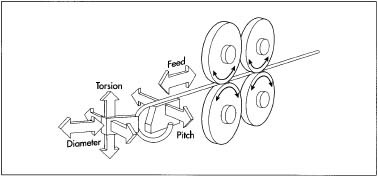History. Very simple, non-coil springs have been used throughout history
Very simple, non-coil springs have been used throughout history. Even a resilient tree branch can be used as a spring. More sophisticated spring devices date to the Bronze Age, when eyebrow tweezers were common in several cultures. During the third century B.C., Greek engineer Ctesibius of Alexandria developed a process for making "springy bronze" by increasing the proportion of tin in the copper alloy, casting the part, and hardening it with hammer blows. He attempted to use a combination of leaf springs to operate a military catapult, but they were not powerful enough. During the second century B.C., Philo of Byzantium, another catapult engineer, built a similar device, apparently with some success. Padlocks were widely used in the ancient Roman empire, and at least one type used bowed metal leaves to keep the devices closed until the leaves were compressed with keys.
The next significant development in the history of springs came in the Middle Ages. A power saw devised by Villard de Honnecourt about 1250 used a water wheel to push the saw blade in one direction, simultaneously bending a pole; as the pole returned to its unbent state, it pulled the saw blade in the opposite direction.
Coiled springs were developed in the early fifteenth century. By replacing the system of weights that commonly powered clocks with a wound spring mechanism, clockmakers

A diagram depicting spring coiling done by a CNC machine.
were able to fashion reliable, portable timekeeping devices. This advance made precise celestial navigation possible for ocean-going ships.
In the eighteenth century, the Industrial Revolution spurred the development of mass-production techniques for making springs. During the 1780s, British locksmith Joseph Bramah used a spring winding machine in his factory. Apparently an adaptation of a lathe, the machine carried a reel of wire in place of a cutting head. Wire from the reel was wrapped around a rod secured in the lathe. The speed of the lead screw, which carried the reel parallel to the spinning rod, could be adjusted to vary the spacing of the spring's coils.
Common examples of current spring usage range from tiny coils that support keys on cellular phone touchpads to enormous coils that support entire buildings and protect them from earthquake vibration.
